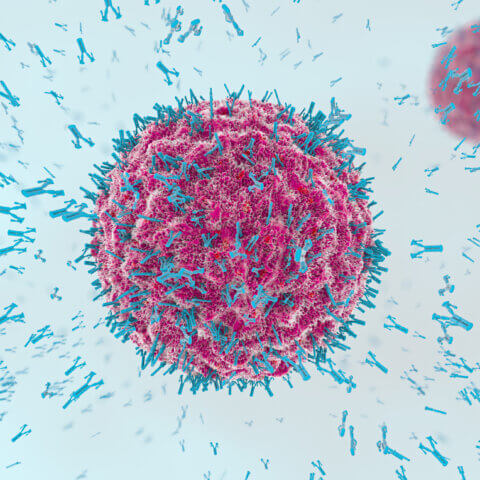Last Updated: November 10, 2025, 2 pm UTC
As the pace of innovation in oncology accelerates, artificial intelligence (AI) and real-world evidence (RWE) are reshaping how researchers understand disease, design studies, and deliver care. These technologies are bridging science, data, and clinical insight in ways that were once unimaginable, turning the vision of smarter, faster, and more precise cancer research into reality.
AI brings the power of pattern recognition and predictive modeling, while RWE grounds these innovations in real-world patient outcomes. Together, they form a feedback loop that is redefining oncology development from discovery through post-marketing surveillance, and regulators are working rapidly to keep pace.
A New Era of Oncology Innovation
Oncology remains one of the most heavily funded and rapidly evolving areas of biomedical research. This scale of activity highlights a shared challenge: how to manage growing trial complexity while accelerating timelines, personalizing treatment, and expanding patient access. AI and RWE are increasingly central to this equation. Both technologies are helping sponsors develop and interpret vast datasets, identify meaningful endpoints, and enhance regulatory confidence, even when patient populations are small or heterogeneous. AI and RWE—in parallel with evolving regulatory requirements—are reshaping and advancing oncology development programs.
Understanding the Foundations: AI and RWE
AI refers to machine-based systems that, for a defined objective, can make predictions or recommendations that influence real or virtual environments. Within healthcare, machine learning (ML) enables algorithms to improve performance based on data over time.
The groundwork for medical AI began in the 1950s, with deep learning emerging as a major driver of progress in the early 2000s with new computational tools, cloud computing, and digitization of patient data in the early 2020s. Notable milestones include the first deep-learning model for skin cancer detection in 2017 and the FDA’s breakthrough device designation for AI in cancer diagnosis in 2019.[i]
RWE, on the other hand, is clinical evidence about the use and potential benefits or risks of a medical product derived from the analysis of real-world data (RWD), such as electronic health records, medical claims, registries, and digital health tools. Long used for post-marketing safety surveillance, RWE gained regulatory momentum following the 21st Century Cures Act of 2016, which directed the FDA to create a framework for its use in drug and device approvals, published in 2018. Since then, its role has expanded to include efficacy evaluations, label expansions, and new indication support.
Where AI and RWE Intersect
AI and RWE complement one another across the oncology development lifecycle.
- In early discovery, AI helps identify biomarkers and novel drug targets.
- In clinical operations, it optimizes patient recruitment through real-time matching and adaptive designs.
- In diagnostics and imaging, AI improves accuracy and accelerates interpretation.
- Meanwhile, RWE contextualizes these findings, validating biomarkers, modeling outcomes, and revealing how therapies perform beyond controlled trial settings.
- AI can be used with RWE to make large datasets more manageable, supporting RWE collection and analysis.
Together, these tools enable personalized medicine at scale—offering researchers and clinicians a continuous stream of actionable insights that extend far beyond traditional data collection methods.
A Rapidly Evolving Regulatory Landscape
Regulatory agencies are working to both harness and guide the use of AI and RWE. FDA has an Advancing RWE Program, aimed at improving the quality and acceptability of RWE-based approaches to support new intended labeling claims, including approval of new indications or to meet post-approval study requirements. EMA and the European Medicines Regulatory Network have been working to establish a framework to enable the use and establish the value of RWE across various regulatory use cases. Canada’s Drug and Health Technology Agency (CADTH), Health Canada, and other stakeholders have developed the Guidance for Reporting RWE to Support Decision-making, which promotes the use of high-quality RWD and RWE in drug development and regulatory decision-making. The UK MHRA launched its first Data Strategy for 2024–2027, outlining a plan to leverage data, digital technology, and RWE to prioritize patient safety and public health and foster innovation in healthcare regulation.
In 2024, the FDA established the CDER AI Council to coordinate policy, promote consistency, and oversee internal AI capabilities. This effort culminated in the 2025 draft guidance, “Considerations for the Use of Artificial Intelligence to Support Regulatory Decision-Making for Drug and Biological Products.”[ii] The FDA has also implemented internal tools such as ELSA, a generative AI system designed to streamline safety assessments and label comparisons. While the agency emphasizes openness to innovation, it continues to require context-specific validation, transparency, and ethical safeguards. Globally, regulators are taking similar steps.
- The EU’s AI Act and EMA reflection paper aim to ensure trustworthy AI across the product lifecycle.
- Health Canada has issued guidance for machine-learning medical devices and the use of RWE in submissions.
- The UK MHRA’s Data Strategy (2024–2027) integrates RWE and AI into earlier approval pathways and post-market surveillance.
This coordinated movement signals growing acceptance—paired with heightened scrutiny—to ensure reliability, reproducibility, and patient safety.
Clinical Applications Driving Real-World Impact
Digital Pathology
The use of AI and RWE in digital pathology highlights three main categories of impact:
- Prognostic: Better patient risk stratification
- Predictive: Forecast treatment benefit
- Practical Impact: More personalized, less toxic, cost-effective
Digital pathology exemplifies how AI is already reshaping oncology practice. By applying machine learning to pathology images, AI enhances biomarker scoring accuracy, detects subtle histologic patterns, and accelerates turnaround times.
In prostate cancer, the Artera AI model integrated pathology and clinical data from the CHAARTED study to stratify patients into high-, intermediate-, and low-risk groups revealing clear differences in five-year overall survival. Such stratification allows clinicians to tailor therapy intensity, minimize unnecessary toxicity, and monitor high-risk patients more closely.[iii]
Beyond prognosis, AI is correlating image-based biomarkers with molecular alterations like PD-L1 expression and MSI status, supporting more precise, personalized therapy selection without additional invasive testing.
Patient Recruitment and Trial Optimization
Recruitment remains one of the most persistent challenges in oncology. AI tools such as Tempus and IBM Watson Health are helping overcome this by scanning electronic health records, pathology reports, and genomic data to identify eligible patients in real time.
At ESMO 2024, the Tempus TIME Trial Network demonstrated how AI-driven matching for non-small cell lung and breast cancer improved referral and enrollment rates, particularly for patients with rare mutations. Integrated systems can now alert physicians when a patient qualifies for an active trial, reducing screening time and increasing trial accessibility for underrepresented groups.
Synthetic Control Arms
When randomized control trials are not feasible, synthetic control arms (SCAs) created from real-world data are emerging as a powerful alternative. AI analyzes RWE from cancer registries and EHRs to identify patients who match trial inclusion criteria and models outcomes for comparable cohorts.
This approach not only accelerates timelines but also reduces patient burden and strengthens the ethical foundation of oncology studies. The FDA has already accepted RWE as supportive evidence in dozens of oncology submissions, several of which resulted in approvals with RWE included directly in product labeling.
Navigating AI Integration Responsibly
Safe adoption of AI in oncology research requires governance rooted in transparency, accountability, and human oversight. Teams must understand how algorithms are trained, validated, and monitored over time to prevent bias and maintain data integrity. Because AI systems evolve as they learn, continuous validation and expert review are essential to ensure accuracy and trust.
At the same time, ethical and practical challenges must be addressed early:
- Transparency: Many AI systems function as “black boxes,” making it difficult to interpret outputs.
- Accountability: The question of who bears responsibility—clinician, institution, or developer—remains unsettled.
- Data Privacy and Security: As datasets grow, robust de-identification and governance frameworks are essential.
- Bias and Representation: Underrepresentation of minority populations in training data risks perpetuating inequities.
Asking questions such as What data trained this model? or How was bias assessed? reinforces accountability and ensures responsible use.
When deployed thoughtfully, AI can also make trial operations more efficient—improving site and country selection, accelerating patient recruitment, and supporting real-time data monitoring—while preserving the clinician’s role as the ultimate decision-maker. The goal is not to replace human judgment but to enhance it with stronger evidence, clearer insight, and more equitable outcomes.
Engaging Regulators Early and Often
For sponsors, early engagement with the FDA is critical. Discussions during pre-IND or IND stages allow alignment on credibility assessment frameworks, model validation, and the proposed context of use. Regulators encourage sponsors to use risk-based approaches to evaluate AI model performance and to revisit these plans throughout development.
The FDA’s Center for Clinical Trial Innovation and Complex Innovative Trial Design (CID) Program provides structured opportunities to discuss AI-enabled trial methodologies and qualification pathways for drug development tools. It is strongly encouraged for sponsors to engage early with FDA to set expectations regarding the appropriate credibility assessment activities for the proposed model based on risk and context of use and to help identify and determine how to address potential challenges.
Early collaboration not only helps identify potential challenges but also de-risks development, paving a clearer path toward regulatory acceptance.
Charting the Next Phase of Oncology Research
AI and RWE are no longer experimental—they are integral to the evolution of oncology research. Together, these tools are improving prognostic precision, optimizing treatment selection, reducing toxicity, and increasing trial efficiency.
Their success, however, depends on responsible adoption. Data standardization, validation, transparency, and ethical oversight will determine how fully AI and RWE can deliver on their potential to transform patient outcomes. Collaboration among regulators, sponsors, CROs, and healthcare systems remains essential to ensure innovations translate into real-world benefit.
In the years ahead, oncology’s most meaningful breakthroughs may not only come from new molecules but from new ways of understanding data—using intelligence that learns, evidence that grows, and insights that bring life-changing therapies to patients faster and more equitably.
For support with integrating AI and RWE into your oncology research, contact Premier Research – a partner that can accelerate your oncology development through scientific depth, operational precision, and real-world insight.
ABOUT PREMIER RESEARCH:
Premier Research International LLC (Premier) is a global leader in clinical research and consulting services with expertise in driving an efficient and effective path to market for the life sciences industry.
Premier is built with the needs of biotech in mind, turning breakthrough science into life-changing drugs, devices, and diagnostics by addressing trial complexity, overcoming development hurdles, and demonstrating product value.
Leveraging deep therapeutic expertise, innovative technology, and product development operational proficiency—from preclinical planning to clinical trial execution and commercialization—our integrated approach offers personalized, end-to-end solutions to identify the pertinent data and insight necessary to make informed decisions earlier and deliver accelerated development timelines for a smarter, faster path to approval. To learn more visit premier-research.com.
REFERENCES:
[i] Cedars-Sinai Staff. (2023, April 20). AI’s ascendance in medicine: A timeline. Cedars-Sinai. https://www.cedars-sinai.org/discoveries/ai-ascendance-in-medicine.html (cedars-sinai.org)
[ii] United States Food and Drug Administration. (2025, January). Considerations for the use of artificial intelligence to support regulatory decision-making for drug and biological products: Guidance for industry and other interested parties (Draft — Not for Implementation). U.S. Department of Health and Human Services. https://www.fda.gov/media/184830/download
[iii] Prognostic validation of a digital pathology-based multi-modal artificial intelligence (MMAI) biomarker in patients with metastatic hormone-sensitive prostate cancer (mHSPC) from the CHAARTED trial (ECOG-ACRIN EA3805) [Abstract 5077]. Journal of Clinical Oncology, 42(16_suppl), Abstract 5077. https://doi.org/10.1200/JCO.2024.42.16_suppl.5077

 Webinar
Webinar 


 Perspectives Blog
Perspectives Blog 